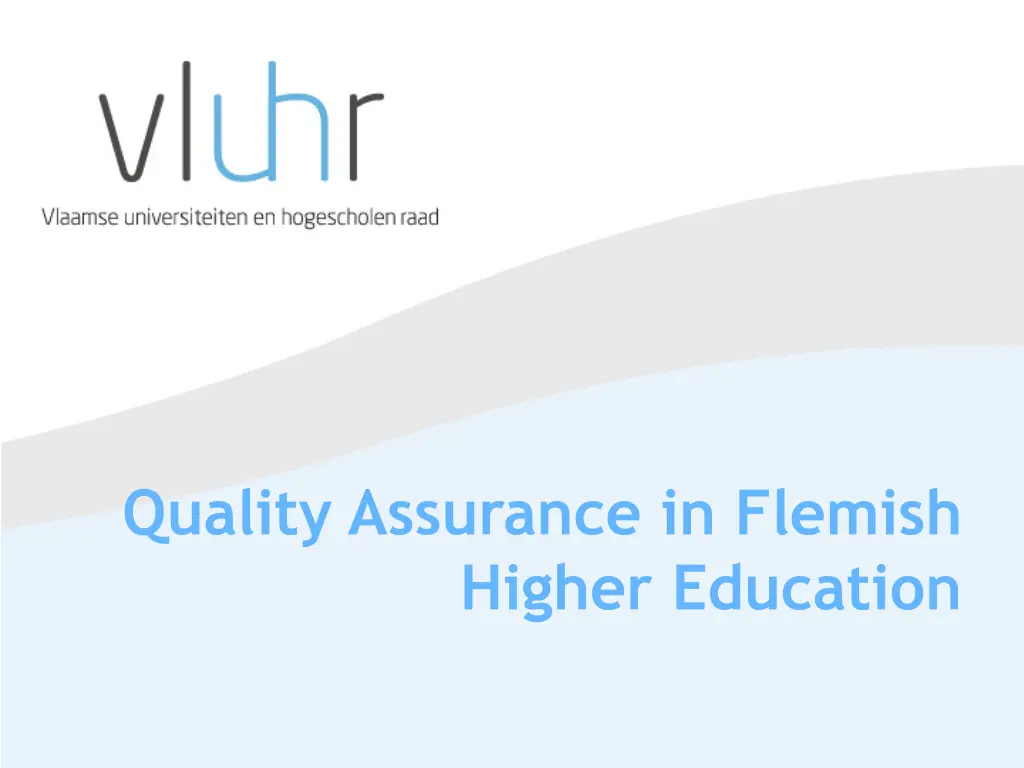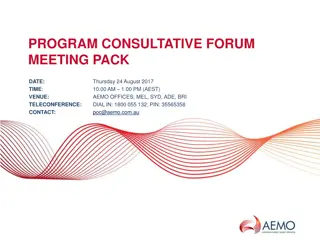
Quality Assurance in Flemish Higher Education Structure and Principles
Explore the quality assurance principles and organizational structure of higher education in Flanders, Belgium. Learn about the new accreditation system, umbrella organizations, and the evolving assessment process aimed at enhancing the quality of educational programs.
Download Presentation

Please find below an Image/Link to download the presentation.
The content on the website is provided AS IS for your information and personal use only. It may not be sold, licensed, or shared on other websites without obtaining consent from the author. If you encounter any issues during the download, it is possible that the publisher has removed the file from their server.
You are allowed to download the files provided on this website for personal or commercial use, subject to the condition that they are used lawfully. All files are the property of their respective owners.
The content on the website is provided AS IS for your information and personal use only. It may not be sold, licensed, or shared on other websites without obtaining consent from the author.
E N D
Presentation Transcript
Quality Assurance in Flemish Higher Education
Overview General information about Belgium and Flanders Structure educational system Flanders Higher Education Organisational Structure Umbrella organisations QA: principles New accreditation system How we get to an assessment report
General information about Belgium and Flanders Belgium = three language communities with their own government and elected parliament. = three official languages: Dutch, French and German. Flanders = Flemish (Dutch-speaking) Community of the federal Kingdom of Belgium. Education competence federal government = competence of the Flemish community
Higher Education Organisational Structure 22 University colleges 6 universities 5 associations = official entity regulating the cooperation of a university and one or more university colleges partners may transfer their powers regarding education, scientific research and social society services to their association
Umbrella organisation VLIR www.vlir.be VLHORA www.vlhora.be VLUHR www.vluhr.be
Quality Assurance: principles Clustering 3-layer-system IQA EQA accreditation Fixed assessment criteria for: SER Panel Report Accreditation Scoring Main focus: quality enhancement
New accreditation system: Evolution Programme assessment Peers Student Accreditation All programmes assessed
New accreditation system Achievement of goals (e.g.:) QA all programmes ensured International legitimacy Awareness QA improved Focus of a new QA system Stimulate QA culture Focus on the content of the programmes Ownership International legitimacy Decrease of the burden of accreditation Focus on the programmes Increase accessibility of reports
New accreditation system Institutional quality assurance assessment (NVAO) + Limited programme assessment (VLUHR)
New accreditation system Limited programme assessment: Autumn 2012 2020: 8 years 2021 2027-29: 6 years Possibility of limiting the accreditation period Institutional quality assurance assessment 2015 2017: no consequences 2019 2021: consequences Accreditation: 6 years
New accreditation system Limited programme assessment The intended learning outcomes of the programme have been concretised with regard to content, level and orientation; they meet international requirements. The curriculum, staff and programme-specific services and facilities enable the incoming students to achieve the intended learning outcomes. The programme has an adequate assessment system in place and demonstrates that the intended learning outcomes are achieved.
How we get to an assessment report
SER Purpose: to stimulate IQA: internal reflection and critical self analysis internal preparation study programme for assessment visit to inform the assessment panel: SER is an important starting point for the assessment panel Contents: SIX SUBJECTS Objectives of the study programme Programme Effort of staff Means / Facilities Internal quality management system Results Accompanying ASPECTS (FACETS) and CRITERIA Results of internal reflection: strong and weak points; measures for improvement First important element towards the study programme report
Assessment visit Purpose: Assessment panel gathers more information about the quality of the study programme Interviews with stakeholders of the study programme Consultation of the available material in situ Site visit to facilities Final opinion of the panel is gathered at concluding meeting Oral report on the provisional findings, conclusions and recommendations Visit minutes & Final opinion Second and third important element towards the study programme report
Study programme report (1) Contents: Per subject and per aspect: evaluation, motivation and recommendations of the assessment panel First feedback to individual study programme Can already provide a basis for improvement of the study progamme
Study programme report (2) Purpose: To correct factual errors To take into account remarks regarding the content of the report First formal feedback in writing Feedback is taken into account by the assessment panel (May provide) a fourth important element towards the study programme report
Assessment report Includes all final study programme reports Includes a comparative chapter Publication of external report





















